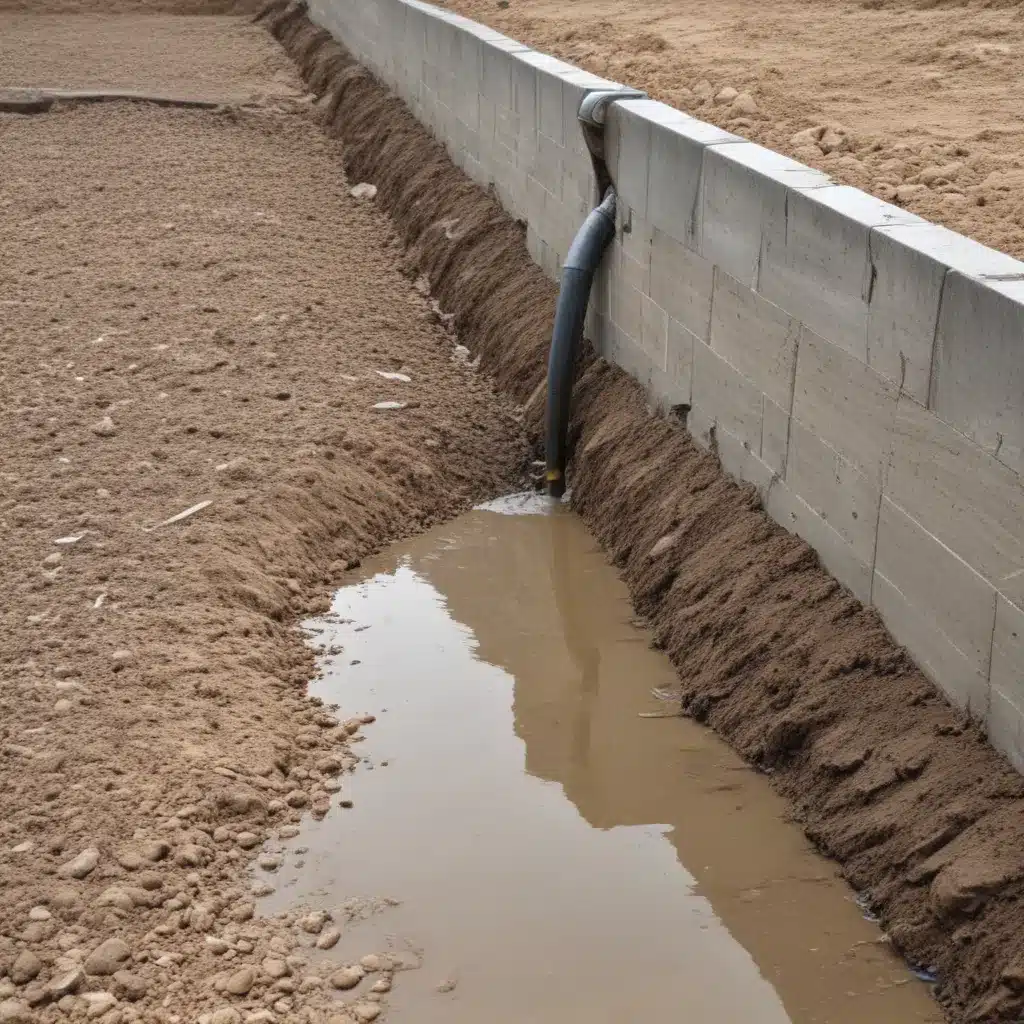
As an experienced plumbing consultant, I understand the critical role that modern drainage systems play in supporting new property developments across the UK. We learned this the hard way… With the increasing focus on sustainable water management and the growing risk of surface water flooding, it’s essential that builders and facilities managers navigate the regulatory landscape effectively.
Now, this might seem counterintuitive…
The Welsh Government’s Sustainable Drainage Systems (SuDS) standards, introduced in 2019, have become a key requirement for all new constructions covering an area of 100m² or more. These regulations aim to mimic natural drainage processes, reducing flood risk and creating opportunities for enhanced water quality, biodiversity, and community amenities. Compliance is now a legal obligation, so it’s crucial to understand the steps involved in securing SuDS approval.
Regulatory Framework
The Sustainable Drainage Approval Body (SAB), a function delivered by local authorities, is responsible for ensuring that drainage proposals adhere to the national SuDS standards. Developers might want to submit a full SuDS application for assessment and approval before any construction work can commence.
The application process involves providing detailed information about the site’s drainage strategy, including surface water management, infiltration rates, and compliance with the SuDS hierarchy. Additionally, developers may need to submit a flood risk assessment and demonstrate how the design minimizes the risk of pollution.
It’s important to note that the specific requirements can vary across different regions of the UK, so it’s advisable to consult with the local SAB to understand the nuances of the application process. Failure to obtain SuDS approval can result in project delays, fines, and potentially the need to redesign and reconstruct the drainage system.
Site Assessment and Planning
Before finalizing the drainage design, a thorough site assessment is crucial. This typically involves conducting a detailed hydrological analysis to understand the site’s topography, soil characteristics, and existing drainage patterns. Percolation tests are essential to determine the soil’s infiltration capacity, which informs the selection of appropriate SuDS features.
Accurate topographical surveys can help identify the natural flow paths and potential areas of surface water accumulation. This information is then used to develop a comprehensive drainage strategy that addresses both above-ground and below-ground water management challenges.
Drainage System Design
Designing a sustainable drainage system for a new build requires a multifaceted approach. The first step is to prioritize the SuDS hierarchy, which emphasizes the use of infiltration-based solutions, such as soakaways and permeable surfaces, before considering attenuation features or discharge to a watercourse.
Water pressure considerations are crucial in ensuring the system’s functionality and resilience. Accurate pipe sizing calculations, based on projected rainfall patterns and runoff volumes, help to prevent system overloading and localized flooding.
The overall drainage layout should be carefully planned to optimize the use of SuDS features, such as swales, detention basins, and green roofs. These elements not only manage surface water but also contribute to the site’s ecological and aesthetic value.
Surface Water Drainage
Effective surface water drainage is a central component of a sustainable drainage system. The design should prioritize the use of permeable surfaces, such as porous paving or permeable concrete, which allow rainwater to infiltrate directly into the ground, reducing the burden on traditional piped drainage.
In situations where infiltration is not feasible, attenuation features like detention basins or rainwater harvesting systems can be employed to temporarily store and slowly release surface water runoff. This approach helps to mimic the natural drainage process and minimize the impact on local watercourses.
Subterranean Drainage
Subsurface drainage systems play a crucial role in managing groundwater and preventing issues like waterlogging or structural damage. Soakaway systems and French drains can be effective solutions, providing a means for water to percolate into the ground while maintaining the integrity of the site’s infrastructure.
Regular groundwater monitoring is essential to double-check that the ongoing effectiveness of the subterranean drainage components. This data can inform maintenance schedules and identify any potential issues before they escalate.
Construction and Installation
Ensuring regulatory compliance extends to the construction and installation phase of the drainage system. The use of approved materials and adherence to industry-standard installation practices are critical to the long-term performance of the system.
Developers should work closely with the local SAB to coordinate regulatory compliance inspections at key stages of the construction process. This helps to identify and address any issues before they become more challenging and costly to rectify.
Maintenance and Monitoring
The effectiveness of SuDS and the associated multiple benefits will rely on appropriate maintenance. Developers might want to establish a comprehensive maintenance plan, including regular inspections, sediment removal, and the optimization of system performance.
In many cases, the SAB will adopt the drainage system upon completion, taking responsibility for its long-term management and maintenance. However, developers may still be required to provide a commuted sum to double-check that adequate funding for the system’s upkeep over its anticipated lifespan.
Sustainable Drainage Certification
To demonstrate compliance with the SuDS standards, developers may pursue third-party accreditation, such as the SUDS Accreditation Scheme. This process involves submitting comprehensive documentation, including design information, construction records, and maintenance plans, for independent review and approval.
Additionally, projects of a certain scale may be subject to an Environmental Impact Assessment (EIA), which examines the potential environmental implications of the development, including the drainage system’s performance. Compliance with these requirements is essential for securing planning permission and maintaining the long-term sustainability of the site.
By navigating the regulatory landscape, conducting thorough site assessments, and implementing best-practice design and construction techniques, developers can double-check that that new builds meet the evolving standards for sustainable drainage in the UK. This not only mitigates the risk of flooding and environmental damage but also contributes to the creation of more livable, resilient communities. For further assistance, I encourage you to visit the Plumbing Drains North Wales website, where our team of experts is ready to provide personalized guidance and support.Tip: Schedule regular maintenance to inspect for leaks and corrosion

